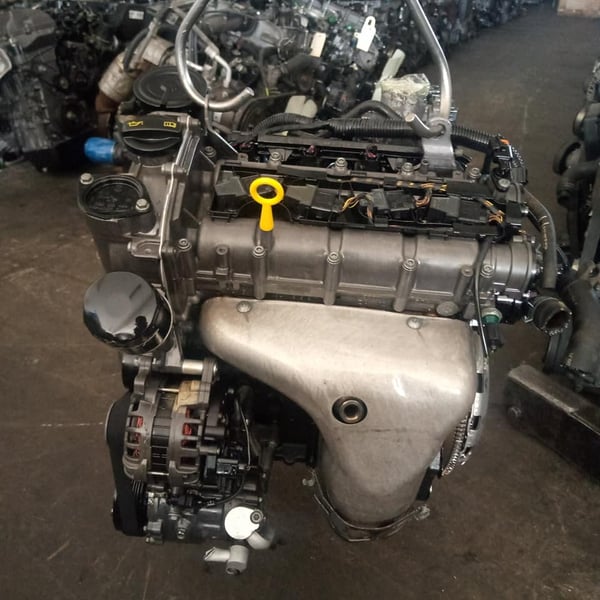Exactly How a Clp Engine Can Boost Performance in Numerous Industries
The arrival of CLP engines notes a considerable shift in operational efficiency throughout various industries, driven by their capacity to optimize gas intake and lessen downtime. As companies significantly prioritize sustainability along with performance, the role of CLP engines becomes also much more important.
Overview of CLP Engines
CLP engines, or Constant Fluid Propellant engines, represent a significant advancement in propulsion technology, particularly for room applications. These engines make use of a continual feed system that permits the continual expulsion of propellant, bring about boosted performance and efficiency compared to conventional solid or hybrid propulsion systems. By maintaining a consistent flow of liquid propellant, CLP engines can accomplish much more accurate thrust control, which is essential for steering spacecraft in different mission circumstances.
The style of CLP engines integrates innovative materials and cutting-edge fuel management systems. clp engine. This causes minimized weight and increased integrity, vital factors for long-duration area missions. Moreover, the continual operation decreases the danger of burning instability, a typical obstacle in conventional rocket engines.

Advantages in Production
The production of Constant Liquid Propellant (CLP) engines presents several remarkable advantages that boost both performance and cost-effectiveness. Among the main benefits is the streamlined production procedure, which minimizes the intricacy associated with traditional propulsion systems. By utilizing fluid propellant, makers can accomplish greater precision in engine efficiency, bring about enhanced energy output and reduced waste.
In addition, CLP engines assist in a higher degree of modularity, enabling much easier integration right into different manufacturing lines. This versatility can substantially reduce lead times and improve overall functional versatility. Making use of CLP modern technology likewise tends to decrease the need for comprehensive maintenance because of less relocating components, which equates right into lowered downtime and operational expenses.

Applications in Logistics
Leveraging Constant Liquid Propellant (CLP) engines in logistics provides considerable advantages in operational effectiveness and dependability. These engines provide a durable remedy for numerous transport demands, making it possible for the smooth activity of items throughout huge ranges. The fundamental design of CLP engines permits constant power output, which translates into smoother and more foreseeable transport timetables.
Among the essential applications of CLP engines in logistics remains in heavy-duty products transportation, where they can drive both ground and aerial cars. Their ability to keep high efficiency under differing tons conditions ensures that shipment timelines are satisfied, thereby enhancing consumer contentment. Furthermore, CLP engines can be integrated right into automated logistics systems, assisting in real-time tracking and optimizing course preparation.
In addition, the resilience of CLP engines decreases upkeep downtime, permitting logistics business to optimize their functional capabilities. This is specifically valuable in warehousing procedures, where effectiveness in handling and moving products is crucial. As logistics proceeds to develop, the integration of CLP engines stands for a forward-thinking approach that not just enhances efficiency but additionally supports the sector's growing needs for reliability and rate.
Impact on Power Efficiency
Exactly How do Continuous Fluid Propellant (CLP) engines boost energy performance in transportation? CLP engines use a regular flow of fluid gas, maximizing combustion procedures and keeping a steady drive output. This style decreases energy losses related to typical combustion engines, where gas shipment can differ and bring about ineffectiveness.
The continual procedure of CLP engines permits a much more reliable thermal cycle, resulting in higher certain impulse compared to traditional engines. clp engine. This equates to lowered fuel consumption for the exact same quantity of job done, significantly reducing operational expenses across numerous transportation industries, including air travel and maritime markets
In addition, the capacity of CLP engines to maintain optimal performance under varying load conditions lowers the requirement for regular velocity and deceleration, additionally enhancing gas efficiency. Boosted power performance not only adds to set you back savings but also results in reduce greenhouse gas exhausts, straightening with international sustainability objectives.
Future Trends and Innovations
Arising innovations in Continual useful link Fluid Propellant (CLP) engine innovation pledge to reinvent the landscape of transportation performance and sustainability. see page As sectors pivot towards greener options, CLP engines stand at the leading edge, integrating innovative products and layout methods that improve performance while reducing environmental impact.
One of one of the most appealing patterns is more the adoption of crossbreed systems that integrate CLP engines with sustainable energy resources. This synergy can optimize gas consumption and lower discharges, aligning with international sustainability objectives. Improvements in computational fluid characteristics (CFD) are helping with the layout of even more aerodynamically efficient engines, leading to minimized drag and improved fuel performance.
Moreover, the development of wise monitoring systems is established to enhance functional performances. These systems leverage information analytics and IoT innovation to optimize engine efficiency in real-time, ensuring that the engines run within their most reliable specifications.
As study remains to discover alternate propellant formulations-- such as biofuels and artificial gas-- the future of CLP engines looks appealing. By using these developments, markets can not just improve their effectiveness yet additionally contribute dramatically to a cleaner, much more sustainable future in transport.
Conclusion
In final thought, CLP engines stand for a considerable improvement in performance across multiple industries. The integration of innovative materials and less relocating components decreases upkeep needs, while alignment with sustainability goals placements CLP engines as a crucial modern technology for the future.
Comments on “Ensure peak efficiency with a properly functioning clp engine.”